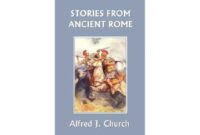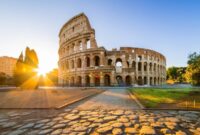The Pantheon Rome, an architectural marvel that has stood the test of time, invites us on a journey through history, engineering, and artistic brilliance.
From its iconic dome to its intricate interior, the Pantheon embodies the grandeur of ancient Rome and continues to inspire awe in modern times.
Pantheon Architecture
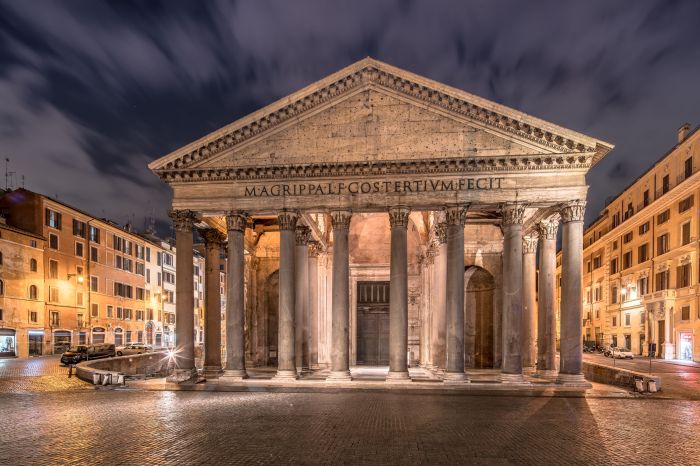
The Pantheon is an ancient Roman temple and one of the best-preserved buildings of its kind. Its iconic dome and oculus have made it a symbol of architectural achievement for centuries.The Pantheon was built during the reign of Emperor Hadrian, around 126 AD.
It was originally dedicated to all the gods of the Roman pantheon, hence its name. The temple’s design is based on the earlier Pantheon built by Marcus Agrippa during the reign of Emperor Augustus. However, Hadrian’s Pantheon is much larger and more elaborate than its predecessor.
The Dome
The Pantheon’s dome is one of the most remarkable feats of Roman engineering. It is made of concrete and has a diameter of 43.3 meters (142 feet). The dome is supported by a series of concentric rings of brick and concrete, which get thinner towards the top.
The dome is open at the top, with a circular opening called the oculus. The oculus is 9 meters (30 feet) in diameter and allows light to flood into the interior of the temple.
The Oculus
The oculus is one of the most distinctive features of the Pantheon. It is a large, circular opening in the center of the dome. The oculus allows light to enter the temple, but it also serves as a ventilation system.
The oculus is designed so that rain and wind are deflected away from the interior of the temple.
The Interior
The interior of the Pantheon is vast and impressive. The temple is divided into two main sections: the cella and the ambulatory. The cella is the central chamber of the temple, and it is where the statue of the god Jupiter once stood.
The ambulatory is a circular corridor that surrounds the cella. The ambulatory is lined with niches that once held statues of other gods.
The Exterior
The exterior of the Pantheon is also impressive. The temple is made of brick and concrete, and it is covered with a layer of white marble. The facade of the temple is dominated by a large portico with eight Corinthian columns.
The portico is flanked by two towers, which were added in the 17th century.
Historical Significance: Pantheon Rome
The Pantheon has played a pivotal role in Roman history, serving as a significant temple during the Roman Empire and continuing to hold cultural and religious importance in the centuries that followed.Originally constructed as a temple dedicated to all Roman gods, the Pantheon became a prominent symbol of Roman religious practices and architectural prowess.
It served as a central place of worship for the Roman people, housing statues of various deities and hosting religious ceremonies. The Pantheon’s grand scale and elaborate design reflected the power and wealth of the Roman Empire, making it an architectural marvel that showcased the empire’s cultural and religious significance.
Evolution of the Pantheon’s Use, Pantheon rome
Over the centuries, the Pantheon’s use has evolved, reflecting the changing religious and cultural landscape of Rome. After the fall of the Roman Empire, the Pantheon was converted into a Christian church, dedicated to Saint Mary and the Martyrs. This transformation involved significant alterations to the building’s interior, including the addition of Christian iconography and the removal of some pagan elements.Despite
these changes, the Pantheon retained its architectural integrity and remained a testament to Roman ingenuity. Its impressive dome and innovative use of concrete and brickwork continued to inspire awe and admiration. In the 19th century, the Pantheon was designated as a national monument and became a museum, housing a collection of ancient sculptures and artifacts.
This transformation allowed the public to appreciate the Pantheon’s historical and artistic significance, ensuring its preservation and continued relevance in modern times.
Cultural and Religious Importance
The Pantheon held immense cultural and religious significance in ancient Rome. As a temple dedicated to all gods, it represented the religious diversity and syncretism of the Roman Empire. The Pantheon’s grandeur and architectural splendor reflected the importance of religion in Roman society and the desire to honor the divine.The
Pantheon also served as a symbol of Roman unity and cultural identity. Its central location in the city made it a focal point for religious ceremonies, public gatherings, and civic events. The Pantheon’s enduring legacy as an architectural masterpiece and a place of worship demonstrates its profound impact on Roman culture and the enduring influence it continues to have on Western civilization.
Artistic and Cultural Impact
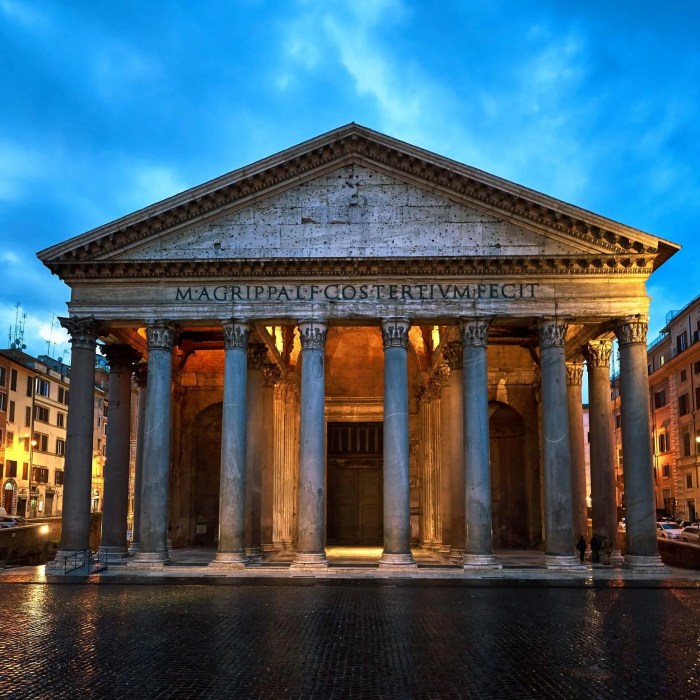
The Pantheon has had a profound influence on Western architecture and art. Its innovative design and use of space have inspired countless architects and artists throughout history.The Pantheon’s influence on architecture can be seen in the many buildings that have been modeled after it.
These include the Basilica of Santa Maria Maggiore in Rome, the Church of St. Paul’s in London, and the United States Capitol in Washington, D.C. The Pantheon’s dome has also been a source of inspiration for architects, with many buildings featuring domes that are similar in design.
The Pantheon in Rome, an architectural marvel, stands as a testament to the grandeur of the Roman Empire. While you’re exploring this iconic landmark, consider venturing a short distance to the vibrant downtown Grapevine area, where a delectable array of restaurants in downtown grapevine awaits.
Savor mouthwatering dishes and immerse yourself in the lively ambiance before returning to the awe-inspiring Pantheon, where history and beauty intertwine.
Symbolism and Iconography
The Pantheon’s decoration is rich in symbolism and iconography. The coffered ceiling is decorated with rosettes, which represent the sun and moon. The oculus in the center of the dome represents the eye of God. The statues of the gods that once stood in the niches around the interior of the Pantheon represented the Roman pantheon.
Inspiration for Artists and Architects
The Pantheon has been a source of inspiration for artists and architects throughout history. Raphael painted the School of Athens in the Vatican, which features a representation of the Pantheon in the background. Michelangelo used the Pantheon as a model for the dome of St.
Peter’s Basilica. And Andrea Palladio used the Pantheon as a model for the Villa Rotonda in Vicenza, Italy.
Engineering and Construction
The Pantheon’s dome is an architectural marvel, showcasing the ingenuity and engineering prowess of ancient Roman builders. The massive dome, with a diameter of 43.3 meters, is made of unreinforced concrete and has stood for centuries without any major structural failures.
Engineering Principles
The dome’s stability is attributed to its innovative design. It has a shallow profile, with a rise of only 7.3 meters, and is supported by a series of massive buttresses. The concrete used in the dome is a mixture of volcanic ash, lime, and water, which hardens over time and forms a strong and durable material.
At the center of the dome is a large oculus, or opening, which measures 8.9 meters in diameter. The oculus allows natural light to flood into the interior of the Pantheon, creating a dramatic and awe-inspiring effect.
Construction Methods
The construction of the Pantheon was a complex and labor-intensive process. The concrete used in the dome was poured in layers, with each layer allowed to harden before the next was added. The dome was supported by a temporary wooden framework, which was removed once the concrete had set.
The oculus was created by leaving a hole in the center of the dome during construction. The hole was then covered with a bronze disc, which helped to protect the interior from the elements.
Comparison to Other Ancient Roman Structures
The Pantheon’s dome is a unique and innovative structure, unlike any other building in ancient Rome. Its size, shape, and construction methods set it apart from other Roman structures, such as the Colosseum or the Baths of Caracalla.
The Pantheon’s dome is a testament to the engineering genius of the ancient Romans. It is a structure that has stood the test of time and continues to inspire awe and admiration today.
Conservation and Restoration
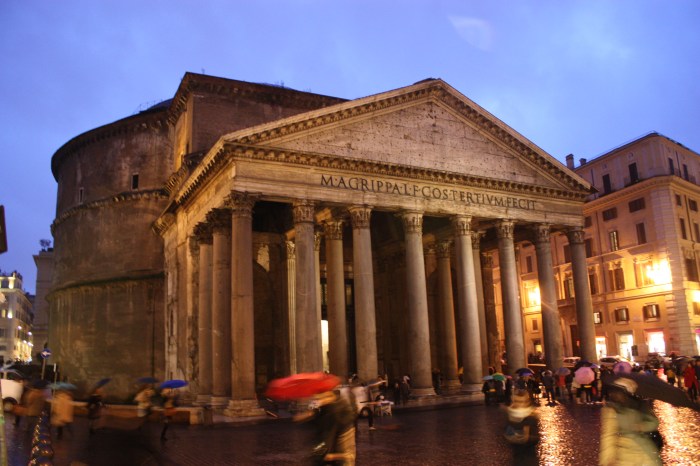
The Pantheon has undergone numerous conservation and restoration efforts throughout its history to preserve its architectural integrity and historical significance. These efforts have involved meticulous planning and the application of specialized techniques to address the challenges posed by time, environmental factors, and human intervention.
The Pantheon in Rome, an architectural marvel from ancient times, stands as a testament to the ingenuity and artistic prowess of the Roman Empire. Its towering dome, a masterpiece of engineering, has inspired awe and wonder for centuries. While exploring the Pantheon’s grandeur, one might be reminded of the breathtaking natural beauty found in the Olympic Peninsula resorts , where rugged coastlines meet lush rainforests, creating a landscape that rivals the Pantheon’s architectural splendor.
One of the primary challenges in restoring the Pantheon has been to maintain its original appearance while addressing structural issues. Over the centuries, the Pantheon’s massive dome has settled and developed cracks, requiring careful reinforcement without altering its iconic shape.
Restoration efforts have also focused on preserving the intricate coffered ceiling and the marble cladding of the interior, which have been subject to wear and tear over time.
Restoration Techniques
- Structural Reinforcement:To stabilize the dome, steel bands were installed in the 18th century and reinforced in the 20th century. These bands provide additional support without compromising the dome’s aesthetics.
- Coffered Ceiling Repair:The coffered ceiling has been repaired and restored using traditional techniques, such as plaster patching and the replacement of damaged tiles. Restorers have taken great care to match the original colors and textures.
- Marble Cladding Restoration:The marble cladding of the interior has been cleaned and repaired to restore its original luster. Damaged or missing pieces have been replaced with matching marble, ensuring the Pantheon’s visual integrity.
The conservation efforts undertaken on the Pantheon have not only preserved its physical structure but have also contributed to its historical and cultural significance. By maintaining its original appearance, the Pantheon serves as a tangible connection to ancient Rome and a testament to the architectural ingenuity of its builders.
Modern Interpretation and Use
The Pantheon’s enduring legacy has inspired countless modern interpretations of its architecture and design. Architects and designers have sought to emulate its iconic dome, open-air oculus, and harmonious proportions in various structures worldwide.
Beyond its architectural influence, the Pantheon has become a sought-after venue for concerts, exhibitions, and other events. Its vast interior and natural lighting provide a unique and awe-inspiring setting for performances and artistic displays.
Symbol of Roman History and Culture
In contemporary society, the Pantheon remains a potent symbol of Roman history and culture. Its preservation and restoration efforts serve as a testament to the enduring value of the Roman architectural legacy. The Pantheon stands as a reminder of Rome’s architectural ingenuity, artistic prowess, and historical significance.
Closing Notes
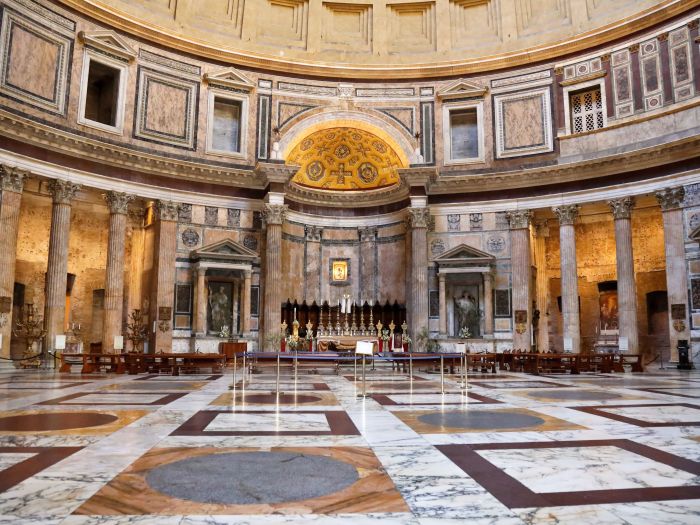
As a testament to human ingenuity and the enduring legacy of ancient civilizations, the Pantheon Rome remains a captivating subject of study and a symbol of architectural triumph.
Its influence on Western art and architecture is undeniable, and its enduring presence ensures that its story will continue to be told for generations to come.

